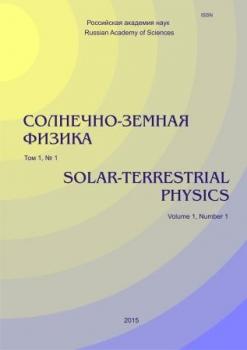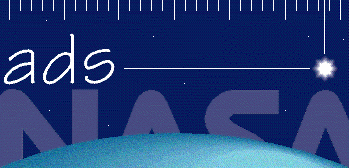University of Chinese Academy of Sciences
Pekin, China
University of Chinese Academy of Sciences
China
University of Chinese Academy of Sciences
Pekin, China
Pekin, China
China
China
China
The solar minimum is a period with a relatively smaller number of sunspots and solar eruptions, and has been less studied before. Since the radio signal rapidly responds to the change of solar plasma and magnetic field, we perform a comprehensive analysis of high resolution spectrum data from SBRS and MUSER: 1) a search for solar radio bursts of different kinds in recent solar minima (2007–2009 and 2016–2018); 2) an analysis of several typical radio burst events, negative and positive drifting bursts, for example the November 22, 2015 and August 29, 2016 events; superfine spectral structure events with mini-flares and even without sunspots, for example the March 28, 2008 and July 04, 2017 events. These results show that there were many radio bursts with a fine structure during solar minima. These events occurred not only in powerful flares, but also in faint flares (class C and B by GOES) or even without flares, but in regions related to weak brightenings or ejecta. We assume that the weak solar radio bursts observed by telescopes with high sensitivity and low interference will help us to understand the basic physical characteristics of small-scale solar eruptions.
solar minimum, flare, radio burst, spectrum, fine structure
1. Altyntsev A.T., Grechnev V.V., Meshalkina N.S., Yan Y. Microwave type III-like bursts as possible signatures of magnetic reconnection. Solar Phys. 2007, vol. 242, iss. 1-2, pp. 111-123. DOI:https://doi.org/10.1007/s11207-007-0207-9.
2. Altyntsev A.T., Fleishman G.D., Huang G.-L., Melnikov V.F. A broadband microwave burst produced by electron beams. Astrophys. J. 2008, vol. 677, iss. 2, pp. 1367-1377. DOI: 10.1086/ 528841.
3. Bornmann P.L., Speich D., Hirman J., Matheson L., Grubb R., Garcia H., Viereck R. GOES X-ray sensor and its use in predicting solar-terrestrial disturbances. Proc. SPIE. 1996, vol. 2812, pp. 291-298. DOI:https://doi.org/10.1117/12.254076.
4. Chen Zhuo, Ma Lin, Xu Long, Yan Y. Imaging and representation learning of solar radio spectrums for classification. Multimedia Tools and Applications. 2016, vol. 75, no. 5, pp. 2859-2875. DOI:https://doi.org/10.1007/s11042-015-2528-2.
5. Chernov G.P. Solar radio bursts with drifting stripes in emission and absorption. Space Sci. Rev. 2006, vol. 127, iss. 1-4, pp. 195-326. DOI:https://doi.org/10.1007/s11214-006-9141-7.
6. Chernov G.P. Fine structure of solar radio bursts. Astrophysics and Space Science Library. Springer-Verlag. Berlin Heidelberg, 2011, vol. 375, 375 p.
7. de Toma G., White O.R., Harvey K.L. Picture of solar minimum and the onset of solar cycle 23. I. Global magnetic field evolution. Astrophys. J. 2000, vol. 529, iss. 2, pp. 1101-1114. DOI:https://doi.org/10.1086/308299.
8. Fu Q.J., Qin Z.H., Ji H.R., Pei L. Broadband spectrometer for decimeter and microwave radio bursts. Solar Phys. 1995, vol. 160, iss. 1, pp. 97-103. DOI:https://doi.org/10.1007/BF00679098.
9. Fu Q., Ji H., Qin Z., Xu Z., Xia Z., Wu H., et al. A New Solar Broadband Radio Spectrometer (SBRS) in China. Solar Phys. 2004, vol. 222, iss. 1, pp. 167-173. DOI:https://doi.org/10.1023/B:SOLA. 0000036876.14446.dd.
10. Gao G., Wang M., Dong, L., Wu N., Lin J. Decimetric and metric digital solar radio spectrometers of the Yunnan Astronomical Observatories and the first-light results. New Astronomy. 2014, vol. 30, pp. 68-78. DOI:https://doi.org/10.1016/j.newast.2014.01.008.
11. Grechnev V.V., Lesovoi S.V., Smolkov G.Ya., Krissinel B.B., Zandanov V.G., Altyntsev A.T., Kardapolova N.N., Sergeev R.Y., Uralov A.M., Maksimov V.P., Lubyshev B.I. The Siberian Solar Radio Telescope: the current state of the instrument, observations, and data. Solar Phys. 2003, vol. 216, iss. 1, pp. 239-272. DOI:https://doi.org/10.1023/A:1026153410061.
12. Ji Hui-rong, Fu Qi-jun, Liu Yu-ying, Cheng Cong-ling, Chen Zhi-jun, Lao De-bang, et al. A radio spectrometer at 2.6-3.8 GHz. Chinese Astron. Astrophys. 2000, vol. 24, iss. 3, pp. 387-393. DOI:https://doi.org/10.1016/S0275-1062(00)00068-0.
13. Karlicky M. Series of high-frequency slowly drifting structures mapping the flare magnetic field reconnection. Astron. Astrophys. 2004, vol. 417, p. 325-332. DOI: 10.1051/ 0004-6361:20034249.
14. Lin R.P., Dennis B.R., Hurford G.J., Smith D.M., Zehnder A., Harvey P.R., et al. The Reuven Ramaty High-Energy Solar Spectroscopic Imager (RHESSI). Solar Phys. 2002, vol. 210, iss. 1, pp. 3-32. DOI:https://doi.org/10.1023/A:1022428818870.
15. Lingri D., Mavromichalaki H., Belov A., Eroshenko E., Yanke V., Abunin A., Abunina M. Solar activity parameters and associated Forbush decreases during the minimum between cycles 23 and 24 and the ascending phase of cycle 24. Solar Phys. 2016, vol. 291, iss. 3, pp.1025-1041. DOI:https://doi.org/10.1007/s11207-016-0863-8.
16. Melnikov V.F., Shibasaki K., Reznikova V.E. Loop-top nonthermal microwave source in extended solar flaring loops. Astrophys. J. 2002, vol. 580, iss. 2, pp. L185-L188. DOI:https://doi.org/10.1086/345587.
17. Melnikov V.F., Reznikova V.E., Shibasaki K., Nakariakov V.M. Spatially resolved microwave pulsations of a flare loop. Astron. Astrohys. 2005, vol. 439, iss. 2, pp. 727-736. DOI:https://doi.org/10.1051/0004-6361:20052774.
18. Nakajima H., Nishio M., Enome S., Shibasaki K., Takano T., Hanaoka Y., et al. The Nobeyama Radioheliograph. Proc. IEEEP. 1994, vol. 82, no. 5, pp. 705-713.
19. Nakariakov V.M., Anfinogentov S., Storozhenko A.A., Kurochkin E.A., Bogod V.M., Sharykin, I.N., Kaltman T.I. Quasi-periodic pulsations in a solar microflare. Astrophys. J. 2018, vol. 859, iss. 2, article id. 154, 8 p. DOI:https://doi.org/10.3847/1538-4357/aabfb9.
20. Pesnell W.D., Thompson B.J., Chamberlin P.C. The Solar Dynamics Observatory (SDO). Solar Phys. 2012, vol. 275, iss. 1-2, pp. 3-15. DOI:https://doi.org/10.1007/s11207-011-9841-3.
21. Smolkov G.Ya., Pistolkors A.A., Treskov T.A., Krissinel B.B., Putilov V.A., Potapov N.N. The Siberian Solar Radio-Telescope - parameters and principle of operation, objectives and results of first observations of spatio-temporal properties of development of active regions and flares. Astrophys. Space Sci. 1986, vol. 119, iss. 1, pp. 1-4. DOI:https://doi.org/10.1007/BF00648801.
22. Tan B.L. The characteristics of valley phase as predictor of the forthcoming solar cycle. Adv. Space Res. 2019, vol. 63, iss. 1, pp. 617-625. DOI:https://doi.org/10.1016/j.asr.2018.08.004.
23. Tan C., Yan Y.H., Liu Y.Y., Jing H.R. Statistical study of radio drifting pulsation structures with associated CMEs and other observations. Adv. Space Res. 2008, 41, no. 6, pp. 969-975. DOI:https://doi.org/10.1016/j.asr.2007.04.085.
24. Tan C., Tan B.L., Yan Y.H., Liu Y. Microwave observations of the Chinese Solar Broadband Radio Spectrometer at Huairou. Solar and Astrophysical Dynamos and Magnetic Activity: Proc. of the International Astronomical Union, IAU Symposium. 2013, vol. 294, pp. 499-500. DOI:https://doi.org/10.1017/S1743921313003037.
25. Tan C., Yan Y., Tan B., Fu Q., Liu Y., Xu G. Study of calibration of solar radio spectrometers and the quiet-Sun radio emission. Astrophys. J. 2015, vol. 808, iss. 1, article id. 61, 14 p.
26. Yan Y., Chen L., Yu S. First radio burst imaging observation from Mingantu Ultrawide Spectral Radioheliograph. Solar and Stellar Flares and their Effects on Planets: Proc. of the International Astronomical Union, IAU Symposium. 2016, vol. 320, pp. 427-435. DOI:https://doi.org/10.1017/S174392131600051X.
27. Zhdanov D.A., Zandanov V.G. Observations of Microwave fine structures by the Badary Broadband Microwave Spectropolarimeter and the Siberian Solar Radio Telescope. Solar Phys. 2015, vol. 290, iss. 1, pp. 287-294. DOI: 10.1007/ s11207-014-0553-3.


















